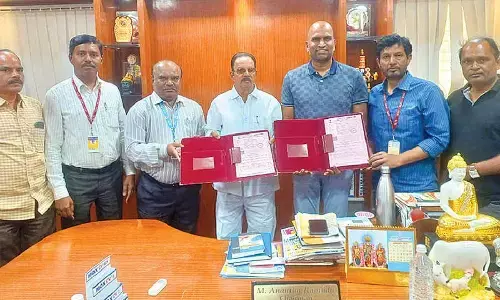Sound logistics vital for $26trn GDP goal

Logistics is of critical importance for both businesses and the economy
Logistics is of critical importance for both businesses and the economy. A robust and efficient logistics sector of a country indicates an efficient forward and reverse of goods and services, which ultimately translates to a fast-paced growth in economy. According to a recent EY report, “India@100: realizing the potential of a $ 26t economy”, India is projected to grow to $26t by FY48. India’s transportation and logistics sector can act as the backbone to support this fast-paced growth, which the country is poised to achieve in the next 25 years. India’s freight movement is heavily skewed toward road transportation, which moves 66% of cargo (in ton-km). This is followed by rail (31%), shipping (3%) and air (1%).
The sector continues to witness unevenness in freight transportation by mode and is working toward solving this impediment. Ports, shipping and logistics industry in India is shifting to align with the evolving business landscape. Improved infrastructure, increased emphasis on digitalization, and a heightened focus on sustainable logistics are driving this shift as the country sets its eyes on unleashing the potential of becoming a $26 trillion economy by FY48 (with $6 trillion by FY30).
This is, however, possible only if the multitude of issues, including policy and infrastructure, are resolved. In the latest thought leadership report, ‘Envisioning the future of Indian logistics@2047,’ EY and the Bombay Chamber of Commerce & Industry (BCCI) propose the following approach to address the challenges.
The main obstacles that the ports, shipping and logistics industry is facing can be broadly categorized as follows: policy; business; digital and infrastructure. The recent disruptions in the supply chain and growing concerns about sustainability have led to an increased global-level adoption of technology-enabled solutions such as blockchain, big data, cloud computing, and digital twins. While the level of adoption is relatively low in India, the government has launched several digital solutions, such as ICEGATE and E-Logs, which have reduced inefficiencies, improved transparency and made goods movement faster.
The Union Government (GoI) has launched several programmes like GatiShakti, Bharatmala and Sagarmala, which all are aimed at building new infrastructure, such as roads, railways and ports, among others. To complement these initiatives, measures are being taken to attract private capital and implement administrative reforms to streamline the planning and execution of infrastructure investments.
Traditionally, the Centre has been the chief proponent and financier of infrastructure development. However, it is increasingly adopting new policies to attract private and foreign investment as levers to fast-track infrastructure development. The National Infrastructure Pipeline (NIP) is one such lever. It is expected to raise around $650 billion worth of investment. Although 100% FDI is allowed in most transport infrastructure development initiatives, considerable effort will be needed to bring about the desired impact.
The country’s shipping and logistics sector is aligning with domestic and global regulations on sustainable practices as well. The sector is taking steps to conform with the leading global benchmarks such as Energy Efficiency Existing Ship Index, Carbon Intensity Rating, and Emissions Trading System.
The future of the Indian transport industry will be carved by radical transformations through major disruptive technologies based on intelligent transport systems driven by Industry 4.0, data analytics, IoT, and artificial intelligence from hyperloop to autonomous and remotely piloted vehicles.
The current transportation sector will also witness an overhaul in its pursuit of cleaner energy and greener low carbon energy fuel with electric-mobility, biofuel driven, and hydrogen-powered vehicles taking a lead. This would enable India to fulfil its commitment of cutting GHG emissions intensity by 33% to 35% per cent below 2005 levels by 2030 and acting as an enabler of energy security by reducing dependence on imports.
Being a pioneer of the International Solar Alliance, India will look to leverage solar energy for transport. It is aiming to achieve global scale and competitiveness in cutting-edge battery technology, higher energy densities, faster charging, and reduced battery degradation from charging.
The Union government has set a target of electric vehicles making up 30% of new sales of cars and two-wheelers by 2030. Transportation in India is thus evolving towards novel modes and smart energy sources, accompanied by physical and digital infrastructure.
One of the pressing issues plaguing Indian cities is traffic congestion. The ever-increasing number of vehicles leads to extended commuting hours, reduced productivity, and increased fuel consumption. Finding effective solutions to alleviate traffic congestion is crucial for ensuring smooth and hassle-free transportation.














